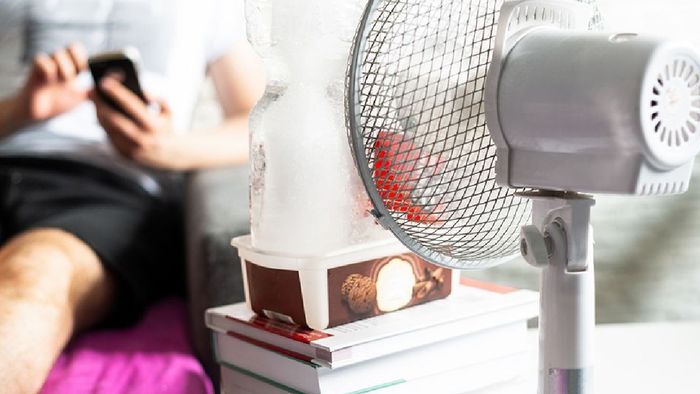Embracing Nature: Strategies for Keeping Your Home Cool During Summers
As summer approaches, many households face the challenge of keeping indoor spaces cool without relying excessively on air conditioning. Overuse of air conditioning can lead to high energy bills and increased environmental impact.

- Jun 10, 2024,
- Updated Jun 10, 2024, 10:48 PM IST
As summer approaches, many households face the challenge of keeping indoor spaces cool without relying excessively on air conditioning. Overuse of air conditioning can lead to high energy bills and increased environmental impact. Fortunately, there are several natural and cost-effective strategies to maintain a cool home during the hottest months.
1. Harnessing Natural Ventilation
Natural ventilation is one of the most effective ways to cool your home. By strategically opening windows and doors, you can create a cross-ventilation system that allows cooler air to flow through and hot air to escape. Here are some tips to maximize natural ventilation:
Morning and Evening Airflow: Open windows and doors during the cooler parts of the day, such as early morning and late evening. This allows cooler air to enter your home and expels the trapped warm air.
Cross Ventilation: Create a pathway for air to flow through by opening windows on opposite sides of a room or building. This helps in creating a breeze that can significantly reduce indoor temperatures.
Ventilation Aids: Use fans to enhance natural ventilation. Ceiling fans, exhaust fans, and portable fans can help circulate air, making the environment more comfortable.
2. Utilizing Shade
Shade can significantly reduce indoor temperatures by blocking direct sunlight. Here are some ways to incorporate shade into your home:
Curtains and Blinds: Use light-colored curtains or blinds to reflect sunlight and keep rooms cooler. Blackout curtains can be particularly effective in blocking heat.
External Shading Devices: Install awnings, shutters, or exterior blinds to prevent sunlight from hitting windows directly. This can reduce the amount of heat that enters your home.
Trees and Plants: Planting trees and shrubs around your house can provide natural shade. Deciduous trees are ideal as they provide shade in the summer and allow sunlight to enter in the winter when they shed their leaves.
3. Thermal Insulation
Proper insulation helps in maintaining a stable indoor temperature by reducing heat exchange between the inside and outside of your home. Key areas to focus on include:
Roof Insulation: Insulating your roof can prevent the sun's heat from penetrating your living spaces. Reflective roofing materials can also help in deflecting heat.
Wall Insulation: Insulating walls, especially those exposed to direct sunlight, can reduce heat gain.
Windows and Doors: Double-glazed windows and weather-stripping around doors and windows can minimize heat transfer.
4. Reflective Materials
Using reflective materials can help in reducing heat absorption. Consider the following:
Cool Roofs: A cool roof is designed to reflect more sunlight and absorb less heat compared to a standard roof. Materials such as reflective paint, sheet covering, or tiles can be used.
Reflective Window Films: Applying reflective films to windows can block a significant amount of solar radiation, reducing indoor temperatures.
5. Evaporative Cooling
Evaporative cooling leverages the natural process of water evaporation to cool the air. Methods to implement evaporative cooling include:
Indoor Plants: Placing plants indoors can increase humidity and cool the air as water evaporates from the leaves.
Water Features: Installing water features such as fountains or misting systems can provide localized cooling effects.
Damp Cloths: Hanging damp cloths or placing bowls of water near windows can help cool the air as the water evaporates.
6. Energy-Efficient Habits
Adopting energy-efficient habits can reduce heat generation inside your home. Here are some practical tips:
Limit Heat-Producing Appliances: Minimize the use of heat-producing appliances such as ovens, stoves, and dryers during the hottest parts of the day. Opt for microwave cooking or outdoor grilling instead.
Energy-Efficient Lighting: Replace incandescent bulbs with LED bulbs, which produce less heat and consume less energy.
Ventilation During Cooking: Use exhaust fans or open windows to ventilate heat generated during cooking.
7. Design Considerations
If you are building or renovating your home, consider design elements that promote natural cooling:
Orientation: Orient your home to minimize direct sunlight exposure during peak hours. North-south orientations are often optimal in many climates.
Building Materials: Use materials with high thermal mass, such as brick or concrete, which can absorb and slowly release heat, keeping interiors cooler.
Roof Overhangs: Design roof overhangs to shade windows from direct sunlight while allowing light during cooler seasons.
Maintaining a cool home during summer without relying heavily on air conditioning is achievable through a combination of natural ventilation, shading, insulation, reflective materials, evaporative cooling, energy-efficient habits, and thoughtful design considerations. By embracing these strategies, homeowners can create a comfortable living environment that is both cost-effective and environmentally friendly. As we adapt to the changing climate, these natural cooling methods not only enhance our well-being but also contribute to a sustainable future.